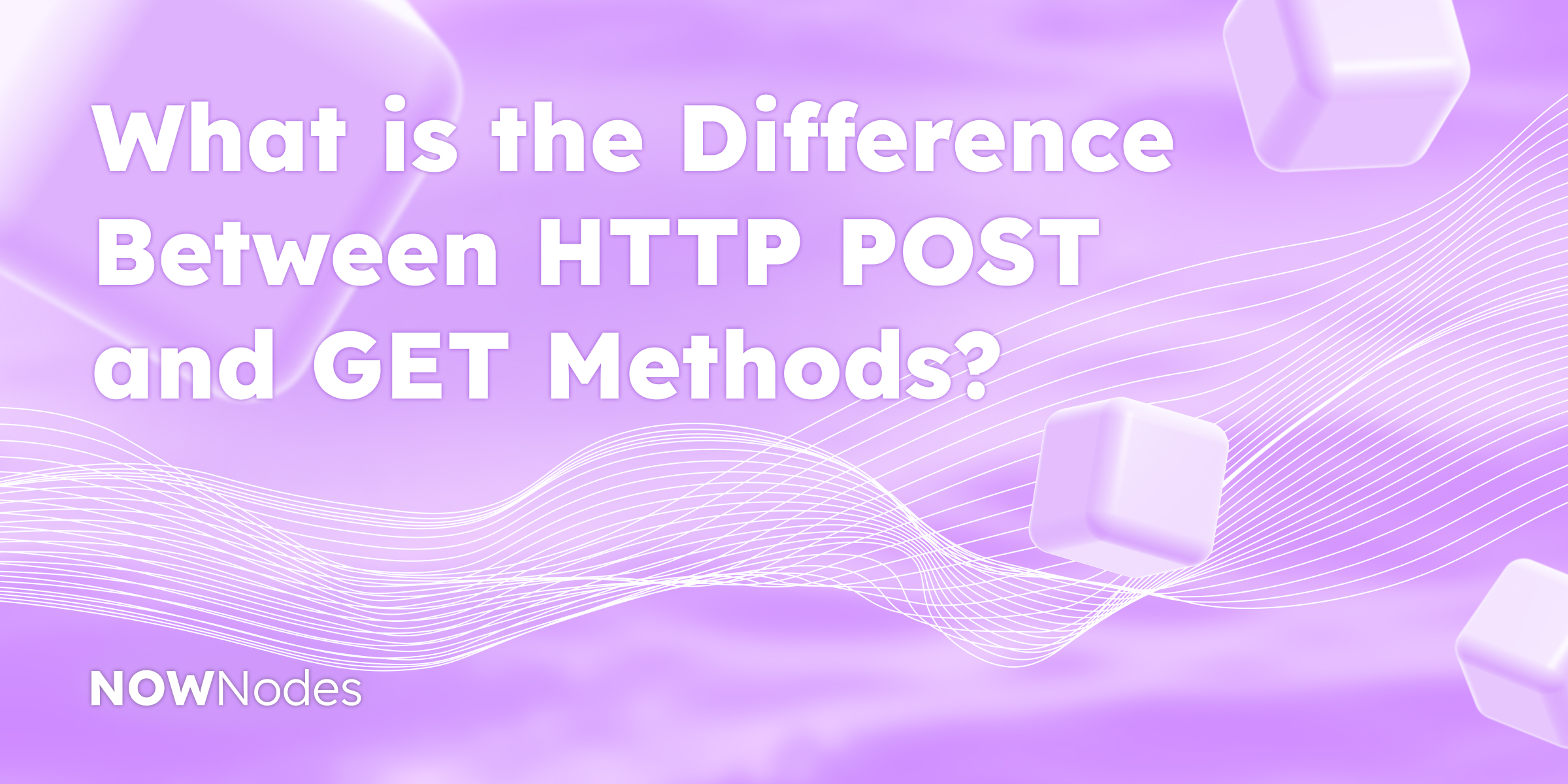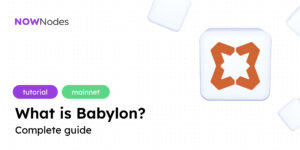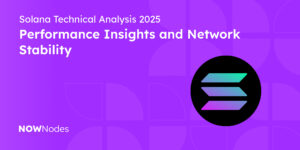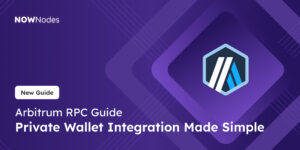When interacting with a blockchain’s Remote Procedure Call (RPC) node, understanding the differences between HTTP GET and POST API methods is crucial. These methods serve as communication techniques to retrieve or send information to the RPC node.
In this article, we will learn the fundamental differences between these API call methods, explore GET and POST request examples, and send API requests with NOWNodes.
Let’s begin with understanding the differences between HTTP POST and GET methods.
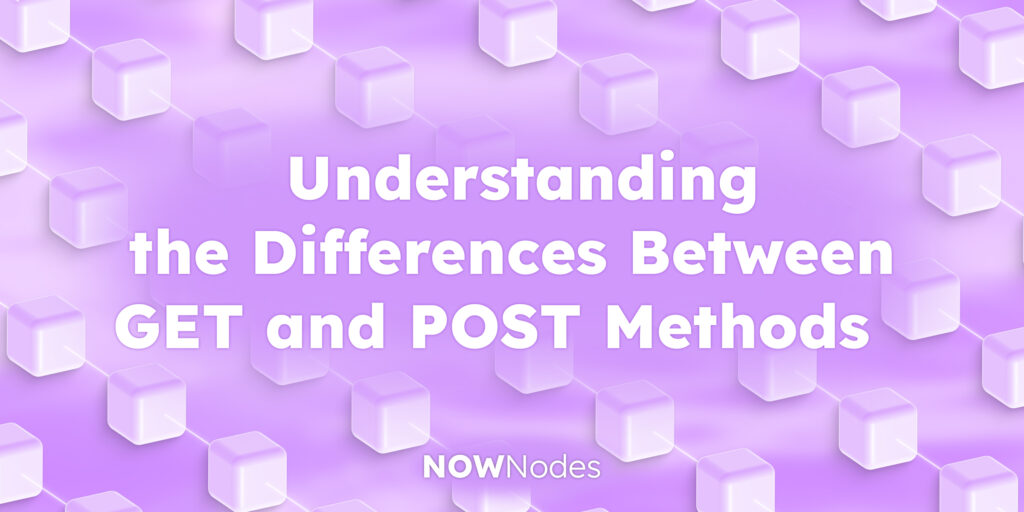
Understanding the Differences Between GET and POST
Interacting with a blockchain’s RPC node requires a keen understanding of the differences between HTTP POST and GET methods. The API GET method is primarily used for retrieving data, while the API POST method is used for sending data to the server.
The API GET method, usually for data retrieval, fetches details from a blockchain node, like transaction status or block specifics, by embedding parameters in the URL. This makes GET transparent but exposes it in logs and limits data length. Crucially, repeated GET requests won’t change the blockchain’s state due to its idempotent nature.
Conversely, the POST method submits data, commonly used in blockchain nodes to securely relay commands. Data is stored in the request’s body, accommodating larger payloads without exposing parameters in the URL. Unlike GET, POST might change the system’s state with varying outcomes for identical requests.
In blockchain RPCs, choosing the right method is crucial: GET for safe data access, and POST for operations altering the blockchain or involving sensitive, extensive data, ensuring secure and efficient blockchain interactions.
Detailed review of GET and POST methods
Both GET and POST API methods have their advantages and disadvantages, and understanding them is important for making informed decisions when developing dApps.
| GET Method | POST Method | |
| Pros | 1. Seamless sharing and bookmarking of URLs. 2. Transparency aids in easier debugging due to visible parameters. 3. Consistent outcomes with repeated requests due to its idempotent nature. | 1. Data is housed in the body, offering better privacy. 2. Can handle larger datasets without the constraints of URL length. 3. Versatile in handling intricate operations including binary data dispatch. |
| Cons | 1. Data visibility in the URL may expose sensitive information. 2. Restricts the volume of data sent due to URL length constraints. 3. Not suitable for complex operations needing extensive data. | 1. Requires more preliminary setup, adding complexity. 2. Non-idempotent nature can lead to varying outcomes with repeated requests. 3. Repeated requests could potentially trigger unintended operations. |
The choice between different API methods depends on the specific use case, security considerations, and the amount of data to be transferred.
To make the process of making GET and POST API calls easier, NOWNodes, the node-as-a-service platform, offers simple instruments and tools to connect to full RPC nodes such as Polygon full node, Solana full node, Fantom full node, BSC full node, TRON full node, etc. and send API requests.
Utilizing Different API Methods
Now that you understand the differences between HTTP POST and GET methods, we are going to send API requests. For this point, it’s important to get access to a full RPC node.
So, in this section, we will gain access to the NOWNodes service and will explore API call methods to maximize the potential of your blockchain projects. The RPC node provider offers robust solutions making it easier to interact with various blockchains via API key.
By offering full nodes via API key, the node-as-a-service platform removes the need for developers and crypto businesses to set up and maintain their blockchain nodes, which can be time-consuming and resource-intensive in terms of finance, technical and human consumptions.
Moreover, the service offers access to block explorers, WebSocket connections, and dedicated solutions. To get access to RPC nodes such as Polygon full node, Solana full node, Fantom full node, BSC full node, TRON full node, etc., and send API requests, follow the simple steps below:
1. Registration:
Start by visiting the NOWNodes website and sign up for an account. This involves verifying your email address and choosing a tariff plan (with an opportunity to pick up a free START plan with access to 5 blockchains and one API key).
2. API Key Generation:
Once registered, you’ll have the ability to generate your unique API key. This key is your passport to making API calls to the RPC nodes you’ve chosen.
Once you’ve got your API key, find the docs page and explore the API call methods. Utilize the provided endpoints to send API requests.
The RPC node provider bridges the gap between developers and blockchains, offering hassle-free access to essential blockchain data. By understanding how to gain access and utilize the different API methods offered by the RPC node provider, developers can accelerate their blockchain projects, bypassing the traditionally labor-intensive node setup and maintenance process.
Now, let’s dive deeper into the theme of utilizing API call methods and explore the use cases.
Sending API Requests in Postman
As soon as you get your private API key, you can send API requests in Postman. Postman is a popular tool that builders use for the API development and testing. It provides an intuitive interface to send API requests and visualize responses, making it easier for developers to understand and develop their applications.
If you want to send a GET and POST API call in Postman using NOWNodes, follow the steps below:
1. First, set Up Postman or utilize its Web version.
2. After that, create a New Request: Click on the ‘+’ button to open a new tab. From the dropdown on the left side of the URL input bar, select either “GET” or “POST”.
3. Enter NOWNodes Endpoint: In the URL input field, type the NOWNodes API endpoint for which you want to make the request. For example, if you’re going to get the Bitcoin block, your API request might look something like this:
curl --location 'https://btcbook.nownodes.io/api/v2/block/0000000000000000000ccb9329b01b002c8be6ebf430725704d3c567e977e306' \
--header 'api-key: your-api-key'4. Make the Request: Once you set everything, click on the “Send” button to make the GET and POST API requests. The response will be displayed in the lower section of the window.
Remember to always check NOWNodes’ official documentation to ensure that you’re using the correct endpoints, parameters, and authentication methods. Different blockchain RPC nodes might have specific requirements or structures for their API call methods.
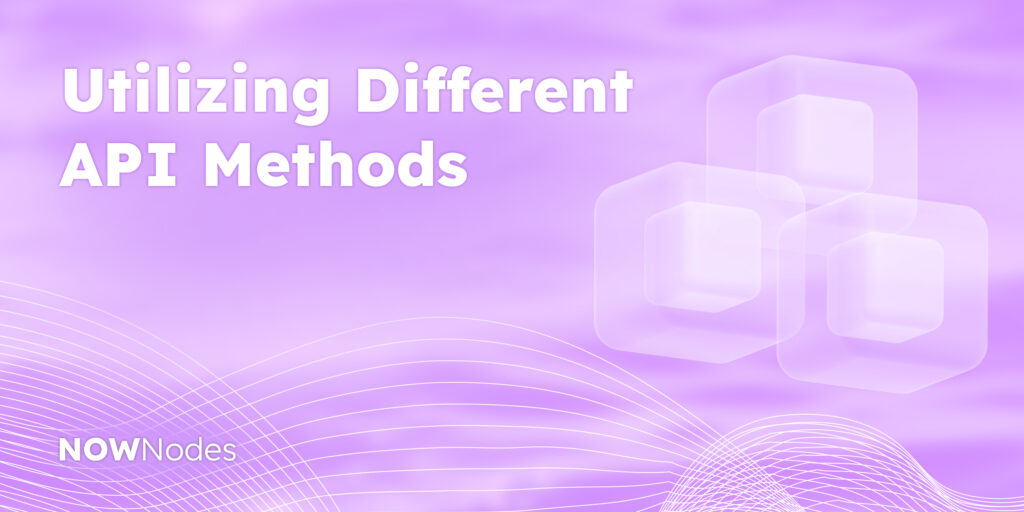
GET Request Examples
As we already know, the API GET method is commonly used for retrieving information from a The GET method is ideal for retrieving blockchain data without modifying the server. NOWNodes offers various GET API methods for seamless blockchain interaction:
- Get Block – Provides details about a specific block, including transactions, rewards, and timestamps.
- Get Status – Monitors node health, synchronization, and overall service status.
- Get Balance History – Tracks an address’s historical balance for financial analysis.
- Get Tickers List – Fetches a list of supported cryptocurrencies for market data platforms.
- Get UTXO – Retrieves unspent transaction outputs to facilitate secure transactions.
- Get Transaction – Returns transaction details, including fees, confirmations, and metadata.
- Get Block Hash – Converts a block height into its unique hash for verification.
- Get Address – Provides balance, transaction history, and other address-related details.
For more GET API methods, visit the NOWNodes documentation. Now, let’s explore POST methods.
POST Request Examples
The POST method is typically used for sending data to a server for processing or creating new The POST method is essential for interacting with blockchain APIs, ensuring secure and efficient data exchange. Below are key POST API methods provided by NOWNodes:
- POST getblockchaininfo – Retrieves general blockchain data, including block count, network difficulty, and chain weight.
- POST gettxoutsetinfo – Provides insights into the entire UTXO set, showing unspent coins on the network.
- POST getblockhash – Returns the block hash for a given block height, crucial for inspecting specific blocks.
- POST getmininginfo – Offers mining-related data, such as current difficulty and hashes per second.
- POST sendrawtransaction – Broadcasts raw transactions to the network for validation and inclusion in blocks.
- POST getblock – Returns detailed information about a specific block, including transactions and confirmations.
- POST getmempoolinfo – Provides real-time data on the mempool, including pending transactions.
- POST decodescript – Decodes hex-encoded redeem scripts, useful for multisig and complex transactions.
- POST getblockheader – Retrieves a concise block summary, including the previous block hash and timestamp.
For more API methods and POST request examples, visit the NOWNodes DOCS page.
Conclusion
The differences between HTTP POST and GET methods are fundamental in the realm of web services and API interactions. While both are crucial for data transmission, their use cases differ: GET primarily retrieves data without altering the state of the server, whereas POST submits data to be processed to a specified resource.
By mastering the intricacies of these API call methods and their application with platforms like NOWNodes, developers are well-equipped to craft robust, efficient, and effective blockchain solutions. Whether it’s fetching transaction details, retrieving block data, or submitting new blockchain interactions, the correct GET and POST API call usage ensures seamless and secure communication with the blockchain.
Also, be sure not to overlook the professional articles and thrilling updates tailored for developers on the NOWNodes blog! Keep yourself updated with the freshest NOWNodes news by following us on Twitter and LinkedIn. Dive into our Telegram channel now and immerse yourself in our thriving Web3 community! 😊
KEY POINTS:
- In conclusion, understanding the differences between HTTP POST and GET methods is crucial when working with APIs. GET is primarily used for retrieving data, while POST is used for sending data to the server.
- To simplify the task of executing API POST and GET requests, NOWNodes provides a user-friendly node-as-a-service platform. This platform facilitates effortless connections to full RPC nodes, including those of the Polygon RPC node, Solana RPC node, BSC RPC node, and more. Node API provider enables streamlined API interactions.
- The choice between API call methods depends on the specific use case, security considerations, and the amount of data to be transferred. NOWNodes’ documents offer a variety of GET and POST API requests to RPC nodes.
